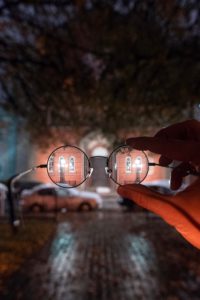I’m happy to announce the start of a new website and a new blog, structured around my new book, “The Tapestry of Being.” I intend for the blog to be a place where I can explore themes of awakened living in the 21st century using the framework of the Tapestry of Being (TOB) orientation. TOB is a non-dual vision that includes devotion, the shamanic and spirit world, relationships, and an embrace of the dimension of everyday human experience.
In this blog, I will be writing my thoughts and feelings about spiritual living, sometimes including pieces from the book. In this entry, I’d like to introduce some of the perspective in which I hold spirituality as opposed to science. I think sharing a bit from the book is an excellent place to begin:
The Nature of This Book
What you will be reading has been adapted from live teaching conversations and talks, and it still reflects the more informal style of its origin. You may find me repeating specific concepts and phrases. When I teach in person, this repetition is entirely intentional because I see that when we hear the same thing many times in different contexts, we retain it and understand it in new ways. I hope you will find that it serves the same purpose here.
Here are three ways you might approach what you read:
1. As a way to hold mutually contradictory spiritual teachings of the world in a universal context so that you can see them as part of a larger whole without having to change the teachings themselves.
2. As a manual of exercises, techniques, and practices that will give you a taste of different perspectives that can help you to develop in a variety of ways, no matter what picture of the universe you currently hold or who you now take yourself to be. You might like to have someone read them to you the first time you do each one. When you understand the Mandala orientation, you may see your own ways of using exercises from different sources to enrich your experience in the various nodes.
3. For those who may be looking for a non-sectarian template that you can use on your own or with others, this is an inclusive non-dual vision of reality that shows you ways to contact your internal guidance and develop uniquely in six essential dimensions. When I speak of the Tapestry of Being in this book, I refer to its teachings as an orientation, its Mandala as a tool, and its subject as your own life.
These teachings convey a way of relating to the mystery of existence that is broad-minded, paradoxical, and intensely individual. There is a way in which we can allow perspectives to have us and, in letting them enter us, they become something unique to ourselves.
An Orientation in Subjectivity
Today there are an endless variety of teachings, techniques, and practices promising spiritual awakening to help us live happier, more fulfilled lives. While this is great, it can also be confusing. On what basis do we know how to choose what serves us? Without a unifying center, how does it all hang together? We want to walk our own path, but we also want to make sure we are going somewhere worthwhile.
Our awakening is just the start of a road that no one before us has traveled. We do not need another program, but instead, an orientation in subjectivity. What does this mean?
In my case, after years of working with groups of people describing their own spiritual lives unfolding, a picture came into focus. There’s a full spectrum of living that is potentially available to us, and perhaps this vision may give those who read this book a sense of what is possible to grow into, even among those who have already significantly awakened.
I began to understand this perspective intuitively long before I had words for it. The language about it emerged over time. I still feel that I have not found the perfect expression of it, but enough to begin to convey its essence.
The Tapestry orientation is the way that I came to relate to traditional spiritual understandings in a postmodern world. The foundation of this orientation developed from trying to make sense of my own direct experience and the experience of those I worked with without falling into a new dogmatism.
A Singular Vision with Depth Has Two Distinct Eyes
From my perspective, there are two intersecting experienced realities. They are two fundamental perspectives, or stances, or orientations to life, and they are both important in different ways.
I consider the subjective stance toward the Mystery of life to be the way of spirituality, while I consider the objective stance toward the Mystery of life to be the way of science.
This is not another form of reductionism or of what I would describe as “the fallacy of 50%.” By that I mean it’s not that reality is 50% subjective and 50% objective. Rather, it is that there are two distinct ways of seeing, and both of them are internally consistent. You can explain all subjective experience from an objective stance and proceed to describe 100% of reality from that perspective. Alternatively, you can explain all objective experience from a subjective stance and proceed to describe 100% of reality from that perspective. Each perspective sees what it sees—they are not the same—yet together they form the total experience of a single human being. I think having two eyes is helpful for living a full life. I also think it’s important to let them remain as two eyes and not try to make them somehow become one big eye. They are not one eye, and yet vision has a depth in the unforced and natural integration of the points of views of both eyes together.
From the objective perspective, I was born into a particular time and place. How do I know this? Because other people saw me, objectively, coming into the world, the doctors in the hospital and my mother told me this, and I accept it as objective truth.
From this perspective, the world objectively existed before I arrived. That said, my actual direct subjective experience is that I was never born. I certainly don’t remember being born. What I remember is the world slowly coming online one experiential piece at a time.
There were sensations, colors, and sounds, and then from a rather timeless place there evolved a sense of myself as a center of attention in some particular place and time. At some point, my mother was looking in my direction and speaking to me. At another point, I was interacting with her.
From the subjective perspective I was a space of awareness and a time and place were found manifesting in my midst. Although being able to take the objective stance is a requirement for adulthood, I also have a direct experience of life that is subjective. In this very moment, everything is happening from the position of my own experience. The phrase “subjective reality” has a pejorative connotation that I find makes us prejudiced about the level of respect it deserves. People hear the word “subjective” as if it means “inaccurate” (or at least “not trustable”). Whereas, people hear the word “objective” as if it automatically means “accurate and trustworthy.”
Many of the advances in the world have been gleaned through being scientifically objective and provable objectively, but there’s a whole other realm of experience that is the stuff of subjectivity such as art, love, and even meaning itself.
When I go to a doctor, I want someone who is objectively accurate in their assessment of me as a body, using what they see in front of them.
But when I come home to my partner, I want to experience her in my subjectivity, and I want her to see me as a subject, too. I want heart-to-heart empathy.
The Tapestry of Being is a way of adapting to the mystery called life, from the Radically Subjective perspective. In other words, it’s from the ultimate first-person perspective…what I mean by this is different from, and yet related to, the usual notion of subjectivity. It is going deeper—to the heart of our existence, to what is prior to or beyond the ego/personality—and living life from that basis. Those who do this are not necessarily egoless, but they do know the Ground of their Being beyond the ego as their most profound, bedrock essential nature.
(From “The Tapestry of Being” Preface and Introduction)
I’m excited to begin to share this perspective with the larger world and consider this the start of something that will bridge both individuals and cultures on this ever-smaller planet, and I look forward to sharing more of this with you here, on this blog.













